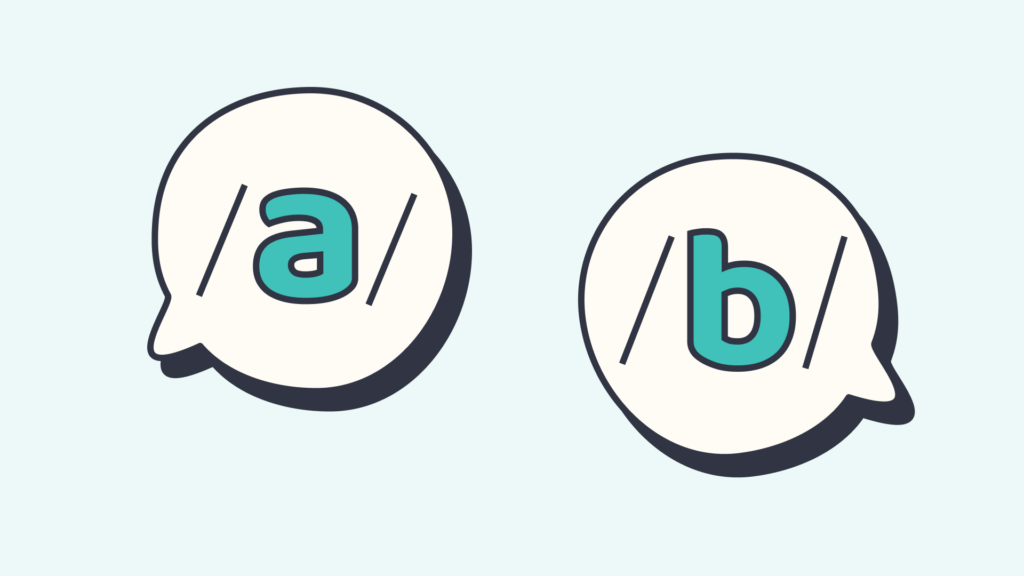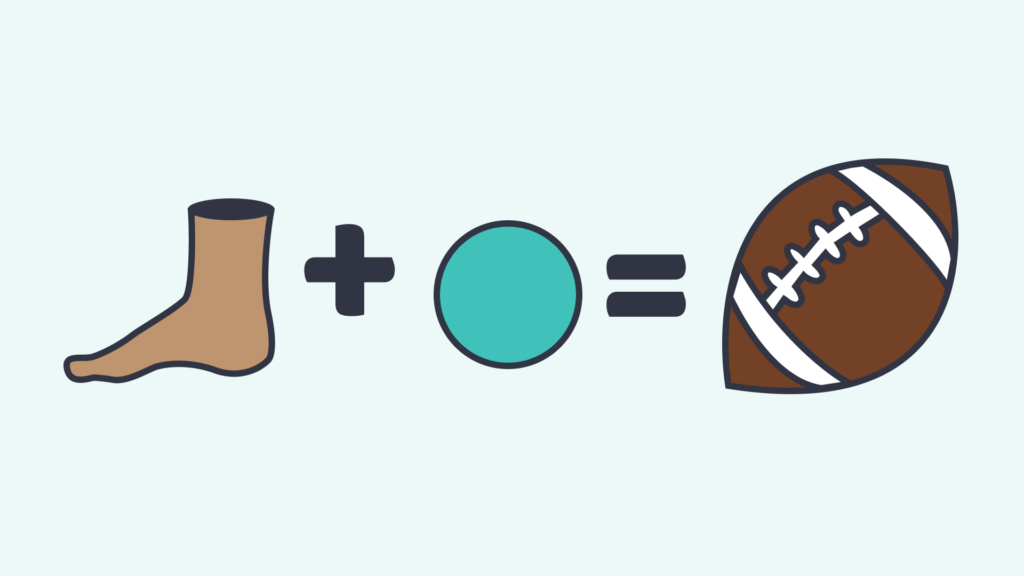8 Easy activities for phonemic awareness in the classroom
In this guide
- What is phonemic awareness?
- The science of reading and phonemic awareness
- What is a phoneme?
- How much instruction is necessary?
- What are phonemic awareness skills?
- 1) Segmenting words
- 2) What’s the sound?
- 3) Phonemic dominoes
- 4) I Spy Game
- 5) What’s wrong with this word?
- 6) Change the word
- 7) Compound combination
- 8) Say the same sound
- In summary
What is phonemic awareness?
There are three important reading terms that are often confused and even sometimes interchanged – phonological awareness, phonemic awareness, and phonics. Each is a distinct part of language and reading development.
Phonological awareness is the ability to recognize and work with the sounds of spoken language and is an essential step in learning to read. Examples include alliteration, identifying syllables, or breaking a sentence into individual words.
Phonics teaches students to connect the written letters with sounds. For example, in phonics students learn that the letter “k” can be spelled as /c/, /k/, /ck/ or /ch/.
The focus for this article is phonemic awareness. Phonemic awareness is the understanding that spoken words are made up of individual sounds, or phonemes. Without phonemic awareness, students will struggle to develop reading skills.
It is important to remember that phonemic awareness is auditory and does not involve words in print.
Students need a firm foundation in phonemic awareness to develop reading skills. It helps students to begin to make the connection between sounds and words.

The science of reading and phonemic awareness
The science of reading is research, over time, from multiple fields of study using methods that confirm and disconfirm theories on how children best learn to read. There are five big ideas in the science of reading – phonemic awareness, phonics, fluency, vocabulary, and comprehension.
This body of research informs how we teach reading and what best practices are pivotal to reading instruction. Phonemic awareness is one of the building blocks of research backed instruction and practice in reading development.
What is a phoneme?
Phonemes are individual sounds found in a word. For example, the word cat is made up of three phonemes /c/, /a/, and /t/. It is the basic unit of sound. There are 44 phonemes in the English language.
It is important when teaching phonemic awareness to make a distinction between letters and phonemes.
There are 26 letters in the English alphabet, but 44 phonemes. This is because some groups of letters create one sound. For example, the digraph /sh/ is a phoneme because it represents one sound.
This explains why the word shut has three phonemes /sh/, /u/, and /t/.

How much instruction is necessary?
I would suggest that you incorporate small amounts of phonemic awareness into your daily classroom routine. These are skills that students need for effective reading development, but they are not the only reading skills students must develop.
Giving students repeated opportunities to interact with phonemes will benefit them in the long run.
For young learners, “phonemic awareness instruction should be just about 8-12 minutes, acting as an oral and auditory warm-up to phonics instruction” (Bottari 2023). This 8-12 minutes does not necessarily have to occur all at the same time. Repeated exposure to phonemic awareness skills can happen throughout the school day.
Phonemic awareness is typically taught in the primary grades – preschool thru 3rd grade in the United States. However, if a student is struggling with basic reading skills, it may help their development to have phonemic awareness skills scaffolded into their reading instruction.
Phonemic awareness skills must be taught explicitly. “Teachers must model skills they want children to perform before the children are asked to demonstrate the skill” (University of Oregon). Each of the activities outlined in this article should be modeled for students. Students need to know what is expected of them.
What are phonemic awareness skills?
There are several phonemic awareness skills that students should master. Students need skills in blending and segmenting sounds. Blending is combining phonemes. Segmenting includes isolating the initial sound, isolating the ending sound, and identifying each phoneme in a word.
- Blending: What word am I trying to say? Mmmmm…oooooo…p.
- Segmentation (first sound isolation): What is the first sound in mop? /m/
- Segmentation (last sound isolation): What is the last sound in mop? /p/
- Segmentation (complete): What are all the sounds you hear in mop? /m/ /o/ /p/
Below you will find activities to help teach phonemic awareness skills to your students.
As you are working on these activities with students, remember that phonemic awareness is an auditory skill. This is not a written language skill. The purpose of phonemic awareness is to prepare students to understand the connection between sounds and words.
1) Segmenting words
This activity requires students to segment words by identifying each phoneme. Students need practice with segmenting words and this activity provides a quick way to give them that practice.
Directions:
- Using a marker (small building block, coin, or math manipulative), say a word and have students show you how many sounds the word makes.
- For example, top = t-o-p = three sounds/3 phonemes, so students would place three objects in a row.
- Then have them tap each object as they say the sound.
Remember, students learning phonemic awareness are just showing you the sounds they hear. So the word bike would be = /b/ /i/ /k/ (silent e) = three phonemes/3 sounds.

2) What’s the sound?
During the course of a classroom reading lesson, such as a read aloud, pause and ask students one or two of the questions in this activity.
Directions:
Ask students these questions:
- “What sound starts the word __________”?
- “What sound ends the word __________”?
- “What other words start with the sound __________”?
- “What word rhymes with __________”?
This can be done with any word. Use words you are currently learning or academic vocabulary relevant to the lesson.
Another way to do this activity is for students to ask and answer these questions with a shoulder partner using words from the lesson.
3) Phonemic dominoes
This activity begins by focusing on initial sounds, however, it can also be done with final sounds.
Directions:
- Scatter domino picture cards face up on a flat surface.
- Taking turns, student one places the START domino on the table, names the picture on the other side of the domino and says its initial sound (i.e., “plant, /p/”).
- Student one looks for a domino with a picture that has the same initial sound, names it, and says its initial sound (i.e., “pig, /p/”). Student connects the two dominoes.
- Student two names the picture on the other side of the domino (i.e., “six”), says its initial sound (i.e., “/s/”), and finds the domino with the matching sound, names the picture and says its initial sound (i.e., “sun, /s/”). Student two then connects to the domino.
- Continue until all dominoes are connected.
Download the phonemic domino cards from The Florida Center for Reading Research.
4) I Spy Game
This activity is excellent for developing initial sound recognition.
Directions:
- Say “I spy with my little eye something that starts with the /b/ sound.”
- Students should say something that starts with the sound you give.
- Continue using other sounds.
There are ways to modify this activity:
- Students can do this in small groups – especially if you have a student that is able to lead the group.
- The student that identifies an object first, can then lead the activity. This way students are taking turns leading the class.
- If your students master the initial sound skill, change the game to ending sound.
5) What’s wrong with this word?
This phonemic awareness activity allows students to work on initial and final sound recognition.
Directions:
- Say a word to students with one sound incorrectly. For example, say “moctor” instead of “doctor”.
- Students should identify the incorrect sound and replace it with the correct sound.
- You can use the word examples below and create some of your own.
Word Examples – Initial Sound:
- wencil -pencil
- laper – paper
- boarf – board
- fleep – sleep
- wog – dog
Word Examples – Final Sound:
- mol – mop
- sweel – sweep
- cak – cat
- op – on
- meaf – mean
6) Change the word
Phoneme manipulation is how we teach phonemic awareness. Use this activity to teach the addition and deletion of phonemes.
Directions:
- Give students a word. Ask them to change one phoneme to create a new word.
- For example, change “had” to “sad” by replacing /h/ with /s/.
- Give students a word. Ask them to remove a sound to make a new word.
- For example, change “hand” to “and” by removing the /h/.

7) Compound combination
Orally combining words is a higher level phonemic awareness skill. Creating new words and including all of the sounds is a skill developed with this activity.
Directions:
- Give students two words and ask them to combine them to create a compound word.
- For example, “class” + “room” = “classroom”.
- You can have students use hand motions with this activity as well.
- One hand placed out palm up for each word, then clapping for the combined word is a possible combination.
Word Examples:
- dog + house = doghouse
- snow + man = snowman
- fire + fighter = firefighter
- foot + ball = football
- jelly + fish = jellyfish
- grape + fruit = grapefruit
8) Say the same sound
Understanding the relationships between words must be explicitly taught. Students need practice with this skill. This is also a way to begin introducing the concept of word families.
Word families are words that have the same ending sound. For example: wheat, meat, seat, heat.
Directions:
- Give students a sound.
- Example – /t/
- Students should give other words that start with the same sound.
- table, Tom, take, tooth, etc
Once students have mastered the initial sound matching skill. Move to the final sound. For example – /ap/, clap, slap, map, tap
You can even do the middle sound when students are ready.
In summary
Giving students the skills they need to succeed is the goal of every teacher. Reading instruction is intricate and must be systematically taught. Phonemic awareness is a piece of the puzzle in helping students to develop their reading skills.
References
- Bottari, M., 2023, Which is Better: Phonemic Awareness With or Without Print?, accessed 5 April 2024, https://heggerty.org/resources/blog-post/which-is-better-phonemic-awareness-with-or-without-print/
- University of Oregon, n.d., Phonemic Awareness, accessed 5 April 2024, http://reading.uoregon.edu/big_ideas/pa/pa_what.php
- ClickView, Phonics and Phonemic Awareness, accessed 5 April 2024, https://www.clickview.net/us/elementary/topics/Mgz2kGO/phonics-and-phonemic-awareness
- ClickView, What Are Rhyming Words?, accessed 5 April 2024, https://www.clickview.net/us/elementary/videos/48234194/what-are-rhyming-words

Mattie Farrer
briefcase iconAVID Site Coordinator / Content Curator
Mattie Farrer has been an educator in various grade levels and capacities during her career. She has a passion for supporting English learners and their language development. She also loves helping teachers reach all students.
Other posts
Want more content like this?
Subscribe for blog updates, monthly video releases, trending topics, and exclusive content delivered straight to your inbox.










